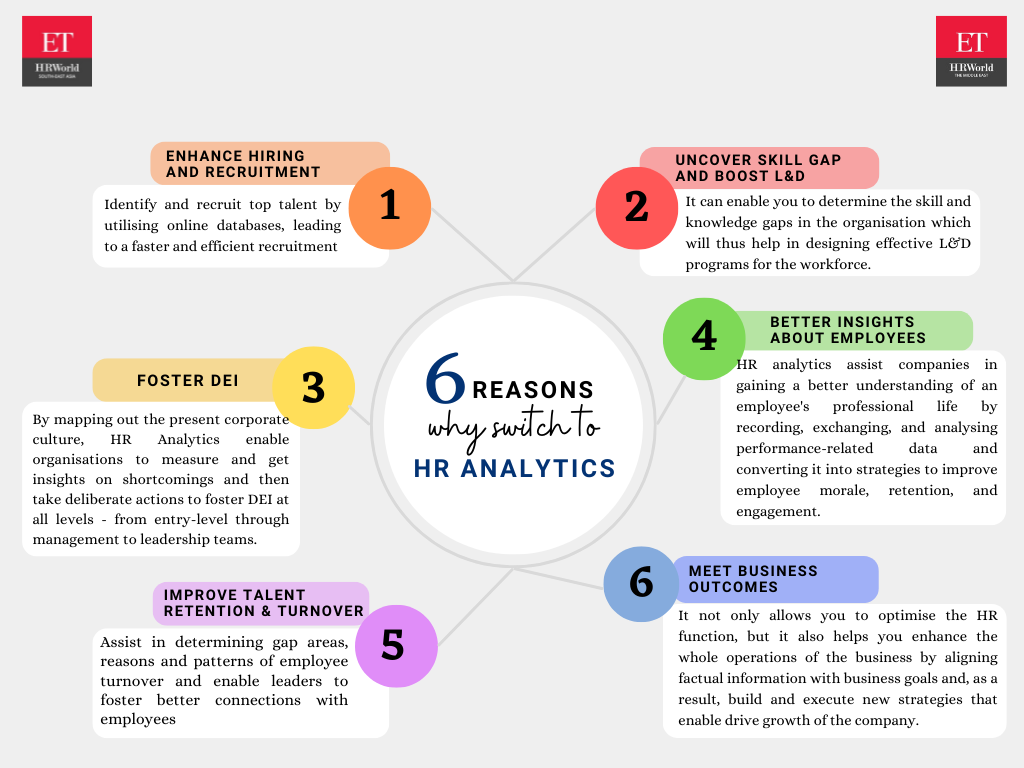Utilize the Power of Big Information with Innovative Analytics Solutions
Utilize the Power of Big Information with Innovative Analytics Solutions
Blog Article
Increase Effectiveness and Success With Information Analytics
In today's data-driven landscape, services are progressively recognizing the pivotal role of data analytics in improving operational effectiveness and earnings. By methodically evaluating data, organizations can discover critical insights that inform calculated choices, simplify processes, and tailor client experiences.
Recognizing Information Analytics
In today's data-driven landscape, understanding information analytics is necessary for companies aiming to improve functional performance and drive productivity. Information analytics entails the systematic computational evaluation of data collections to reveal patterns, connections, and understandings that educate decision-making. By employing numerous techniques, such as statistical analysis, device learning, and anticipating modeling, organizations can transform raw information into actionable knowledge.
The process typically begins with data collection, where appropriate info is collected from numerous sources, consisting of transactional data sources, consumer interactions, and market patterns. This data is then cleansed and arranged to make certain precision and uniformity. As soon as the information is prepared, logical devices and software are utilized to picture the info and explore, enabling stakeholders to identify trends and anomalies.
Inevitably, recognizing information analytics encourages companies to make enlightened choices based upon empirical proof as opposed to intuition. It assists in targeted techniques that can optimize source allowance, enhance customer satisfaction, and enhance total efficiency. As organizations increasingly identify the worth of data-driven understandings, a strong understanding of data analytics ends up being an important expertise for leaders and groups alike, positioning them for sustained success in an affordable setting.

Secret Benefits for Businesses
Companies that take advantage of information analytics can open a wide range of advantages that considerably boost their procedures and earnings. Among the primary benefits is improved decision-making. Information analytics gives actionable understandings stemmed from real-time data, allowing services to make enlightened choices that align with market demands and customer preferences.

Additionally, information analytics promotes improved consumer experiences. By understanding client behaviors and choices, services can tailor their offerings, leading to raised contentment and loyalty. This customized approach often results in greater conversion rates and repeat business.
Additionally, information analytics allows businesses to recognize emerging chances and patterns. By remaining ahead of the contour, organizations can profit from brand-new markets and innovations before their rivals.
Executing Data-Driven Strategies
Effective execution of data-driven techniques needs an extensive understanding of both organizational objectives and available information sources. Organizations needs to first specify their objectives clearly, guaranteeing placement in between data efforts and critical objectives. This clarity enables teams to focus on pertinent metrics and like it insights that drive decision-making.
Following, services must examine their existing data framework. This includes reviewing information quality, availability, and assimilation capacities. High-quality information is essential for exact evaluation, as poor data can lead to illinformed techniques and lost resources. Organizations should develop procedures for information collection, cleansing, and monitoring to maintain data stability.
Moreover, cultivating a data-driven culture is critical. Employees at all levels need to be urged to take advantage of information in their daily procedures. Training programs and workshops can boost data proficiency, encouraging personnel to make educated choices based upon analytical understandings.
Devices and Technologies Introduction
A robust collection of tools and innovations is important for companies intending to harness the complete possibility of data analytics. These devices facilitate the collection, processing, and visualization of information, enabling organizations to derive workable understandings.
At the foundational degree, data monitoring systems such as SQL databases and NoSQL systems give effective information storage space and retrieval abilities. For information processing and analysis, shows languages like Python and R, along with frameworks such as Apache Glow, allow intricate estimations and equipment understanding applications.
Visualization devices, including Tableau and Power BI, change raw information right into intuitive visual styles, making understandings obtainable to stakeholders in any way degrees. Additionally, cloud-based platforms like Google Cloud and AWS provide scalable storage and processing solutions, accommodating the expanding quantities of information organizations run into.
For innovative analytics, anticipating modeling and AI-driven services are significantly taken on, permitting firms to anticipate fads and enhance decision-making processes. Integrating these devices right into existing operations is paramount; organizations that effectively utilize this technology can substantially enhance operational effectiveness and drive earnings. Thus, buying the right tools and modern technologies is a critical imperative for any kind of data-driven organization.
Study of Success
Leveraging information analytics has actually led countless organizations to attain amazing improvements in effectiveness and productivity. One noteworthy case is a huge retail chain that implemented anticipating analytics to enhance inventory monitoring. By evaluating historic sales data and customer fads, the business reduced excess stock by 30%, resulting in significant price financial savings and enhanced capital.
One more example can be found in the manufacturing market, where a leading automotive manufacturer used information analytics to enhance its manufacturing procedures. By monitoring machine performance in real-time, the company identified inefficiencies and bottlenecks, leading to a 20% boost in overall tools efficiency (OEE) This not only improved production rates yet likewise minimized downtime and maintenance costs.

These study show how data analytics can drive tactical decision-making, enhance procedures, and ultimately improve both effectiveness and profitability across numerous sectors.
Verdict
In final thought, the integration of data analytics into business operations provides considerable chances for enhancing efficiency and success. By systematically analyzing data, companies can identify inefficiencies, maximize consumer experiences, and make educated decisions.
In today's data-driven landscape, understanding data analytics is vital for organizations aiming to boost operational efficiency and drive productivity. Data analytics involves the methodical computational analysis of data sets to uncover patterns, correlations, and insights that inform decision-making. Data analytics offers actionable understandings obtained from real-time data, enabling organizations to make informed choices that line up with market needs and customer choices.
High-quality information is crucial for accurate evaluation, as bad information can lead to misguided strategies and lost resources. Organizations must establish processes for data collection, cleaning, and management to preserve information stability.
Report this page